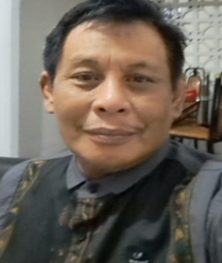
Kanang Setiyo Hindarto
Associate Professor
Regional Development Planning; Soil Evaluation
| EDUCATION |
ITC, The Netherlands
1991-1993
Master’s degree in Land Ecological Survey
University Gadjah Mada, Yogyakarta, Indonesia
1978 – 1984
Bachelor’s degree in Soil Science
| WORKING EXPERIENCE |
University of Bengkulu
Lecturer 1984 – now
| TEACHING |
Bachelor (S1)
- Fundamentals of Soil Science
- Soil Fertility and Fertilizer
- Soil Conservation
- Regional Planning and Development
- Natural Resources and Environment Management
- Soil Survey and Mapping
- Land Evaluation and Land Use Management
- Watershed Management
- Irrigation and Drainage
- Agriculture Mechanization
| RESEARCH INTEREST |
Regional Development Planning
Soil Evaluation
| RESEARCH PROJECT |
- The precision of the criticality model of the water catchment area for anticipating floods in the western part of Bengkulu province (2020)
- Land resources management model of transmigration settlement. Case Study in Pelabi settlement of Pelabi District (2018)
- Soil erosion model and mapping in Bengkulu river watershed catchment area with remote sensing and GIS (2017)
- The study of critical land in Musi Hydropower and Test Catchment area (2017)
| PUBLICATION BOOK |
Analysis of Flood potential Areas from the Critical Level Model of Water Catchment Areas (2021)
| JOURNALS AND PROCEEDINGS |
- Sweet corn (Zea mays Saccararata Sturt L.) Growth and Respone to Tomato Extract Liquid Organic Fertilizer, American Journal of Multidisciplinary Research and Development, Vol. 4, Issue 03, pp25-32, 2022
- Prediction of Erosion and Sedimentation in Micro Catchment Area of Water boy Using Soil and Water Assessment Tools (SWAT) Model -TERRA Journal of Land Restoration, DOI: https://doi.org/10.31186/terra.5.1.27-37, 2021
- Accuracy of The Level of Critical Water Catchment Area for Flood Mitigation Around Bengkulu City, Indonesia – Indonesian Journal of Geography 53 (2), August 2021
- Assessment of Water Bengkulu (Indonesia) watershed based on agroecosystem landscape quality and sustainable land use plan – Biodiversity 21 no 11 DOI 10.13057biodiv/d211150, 2020